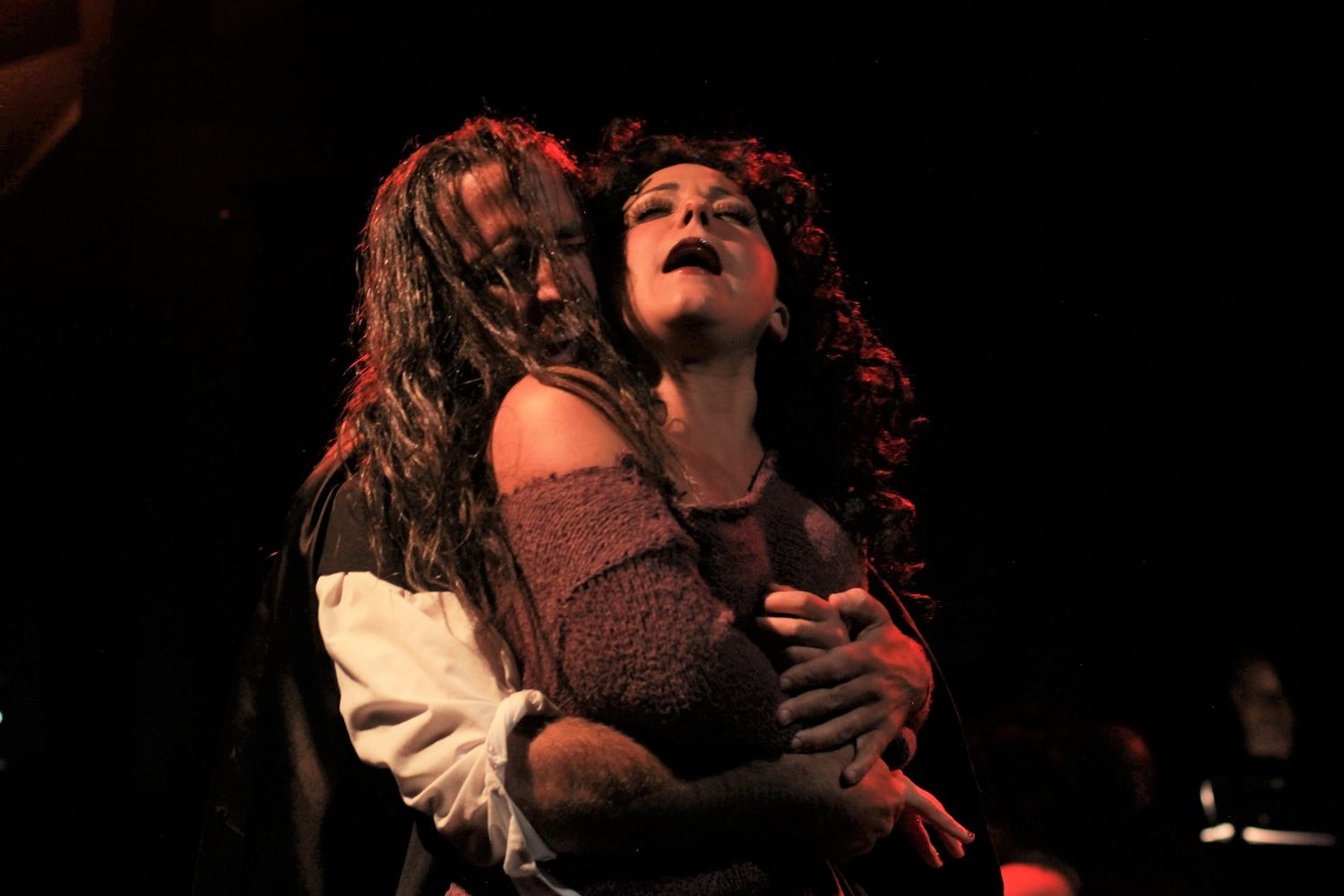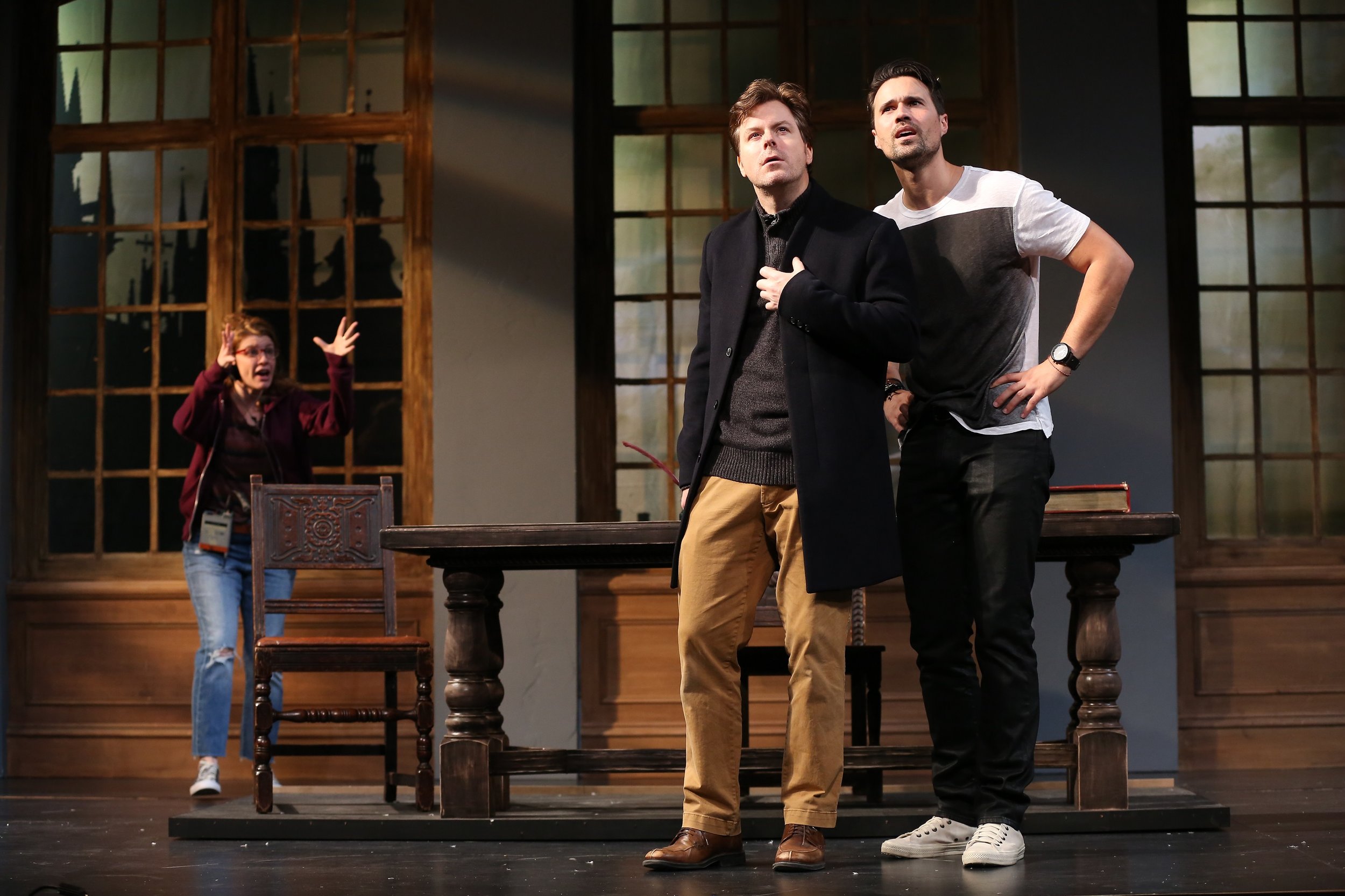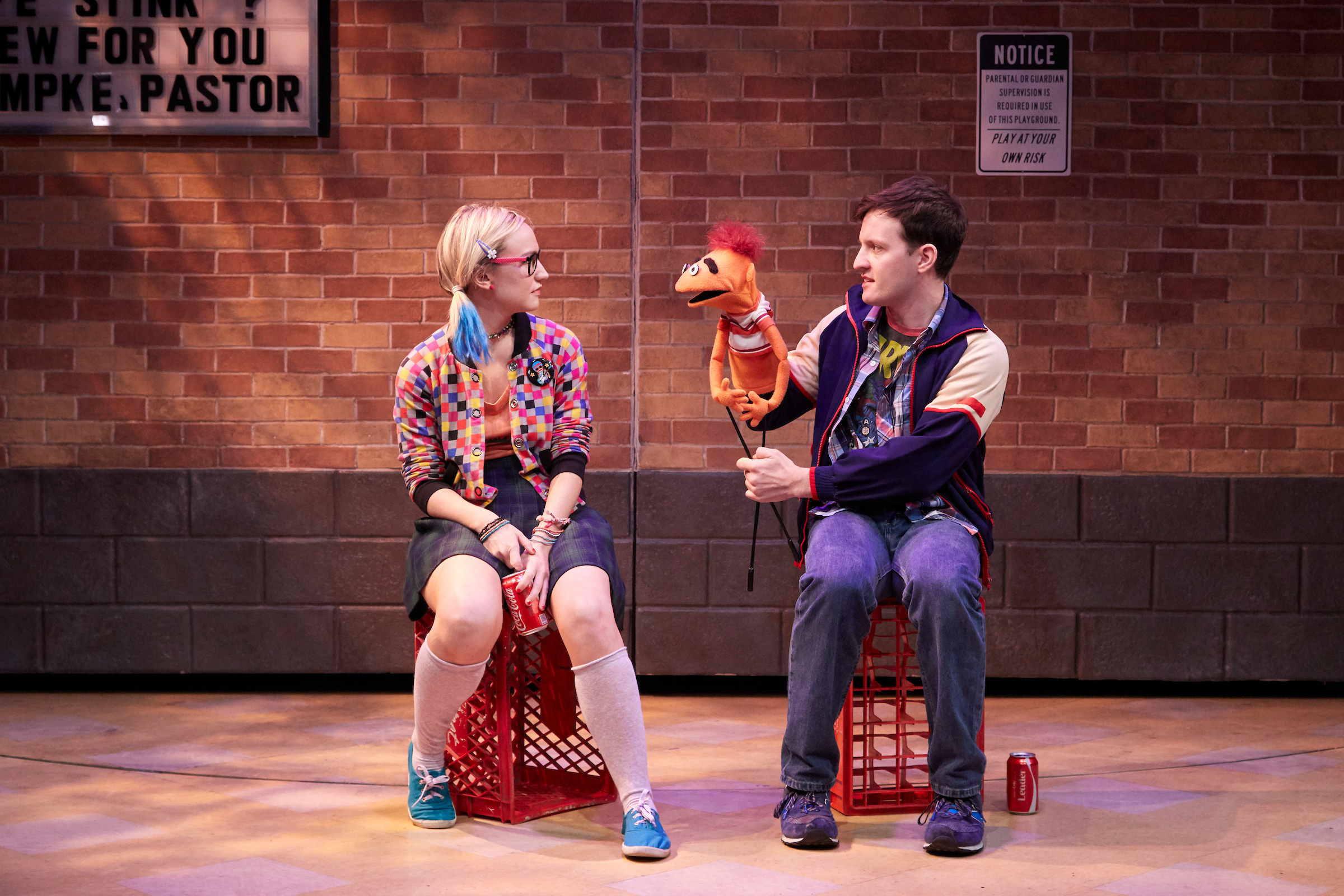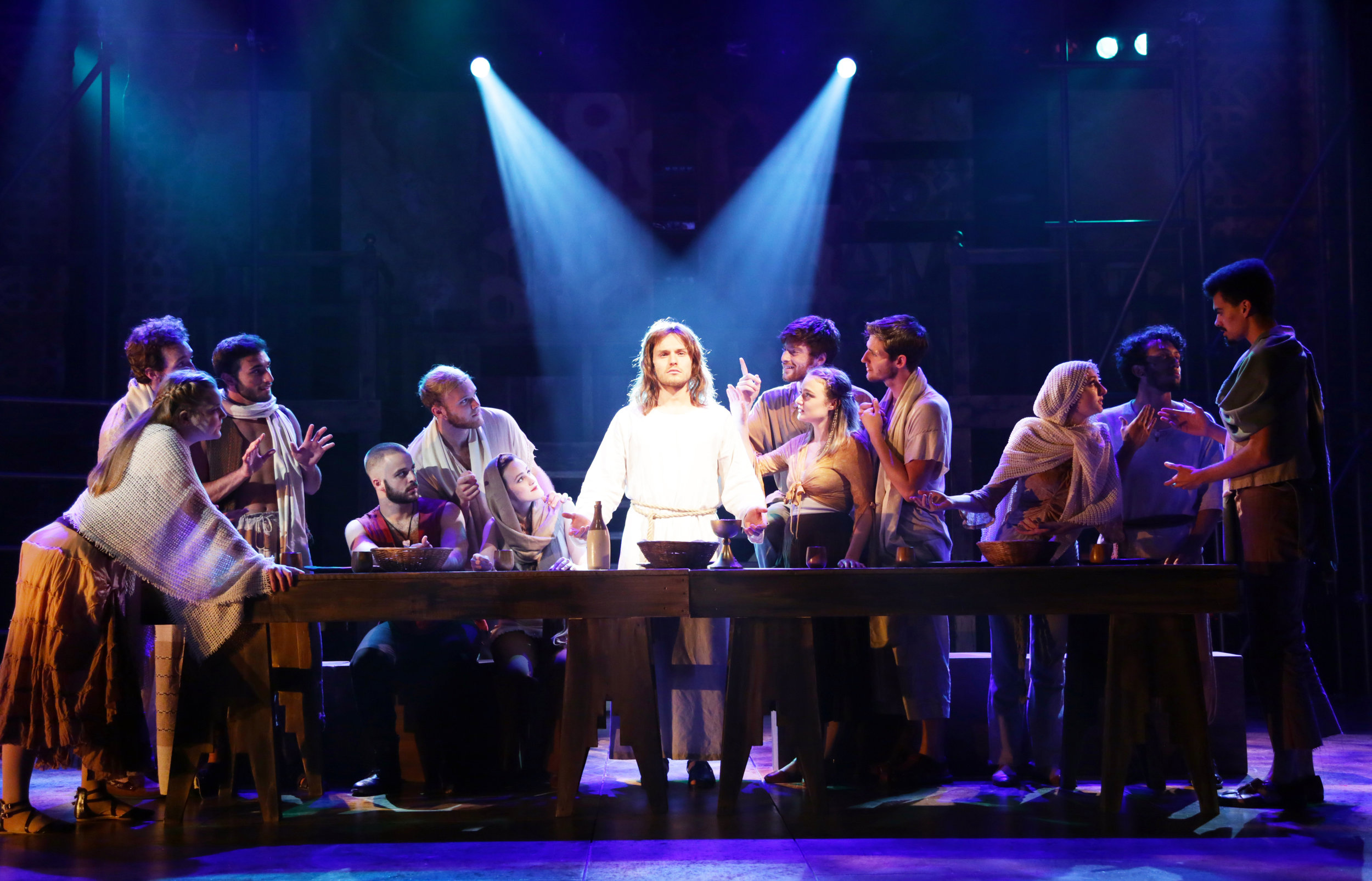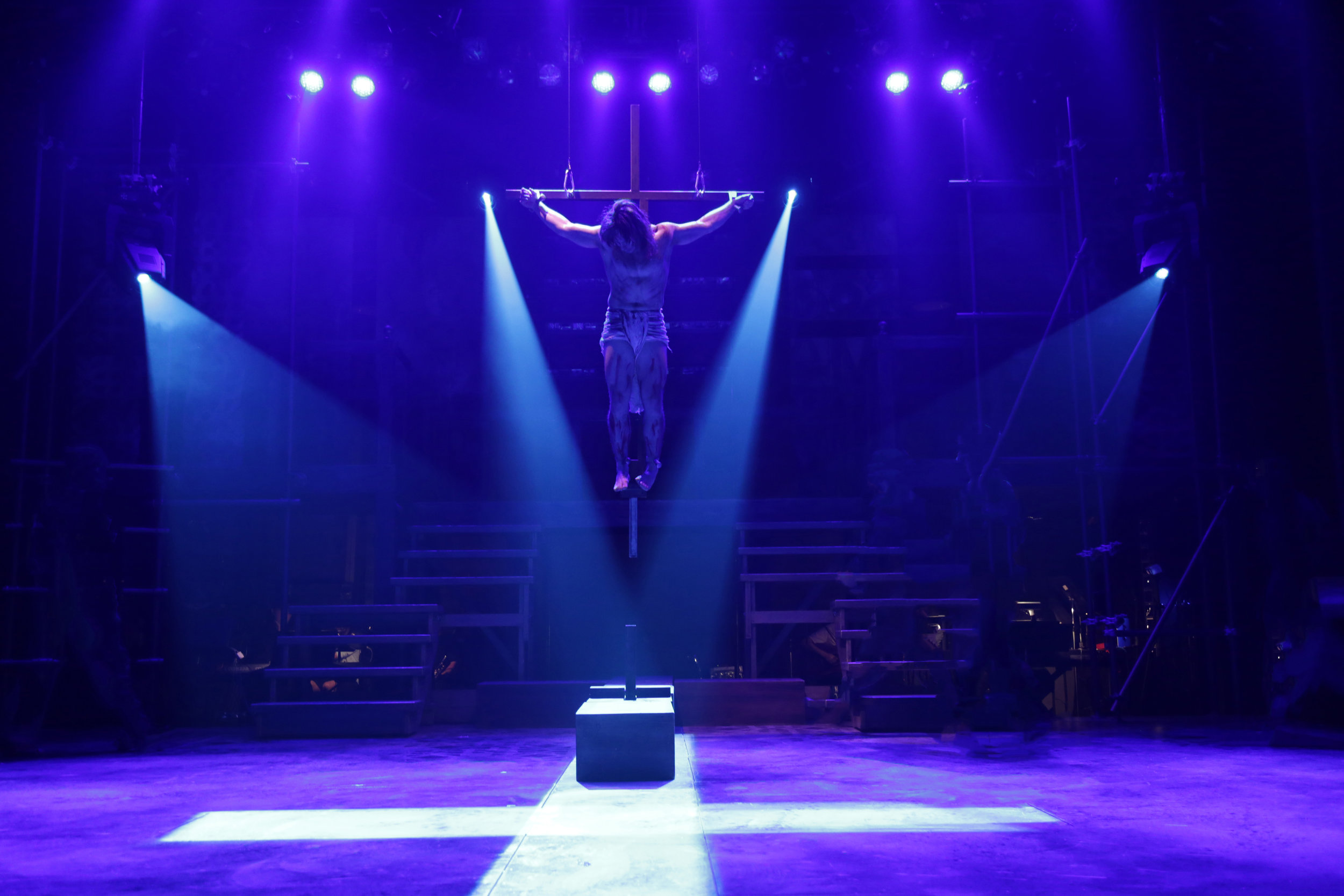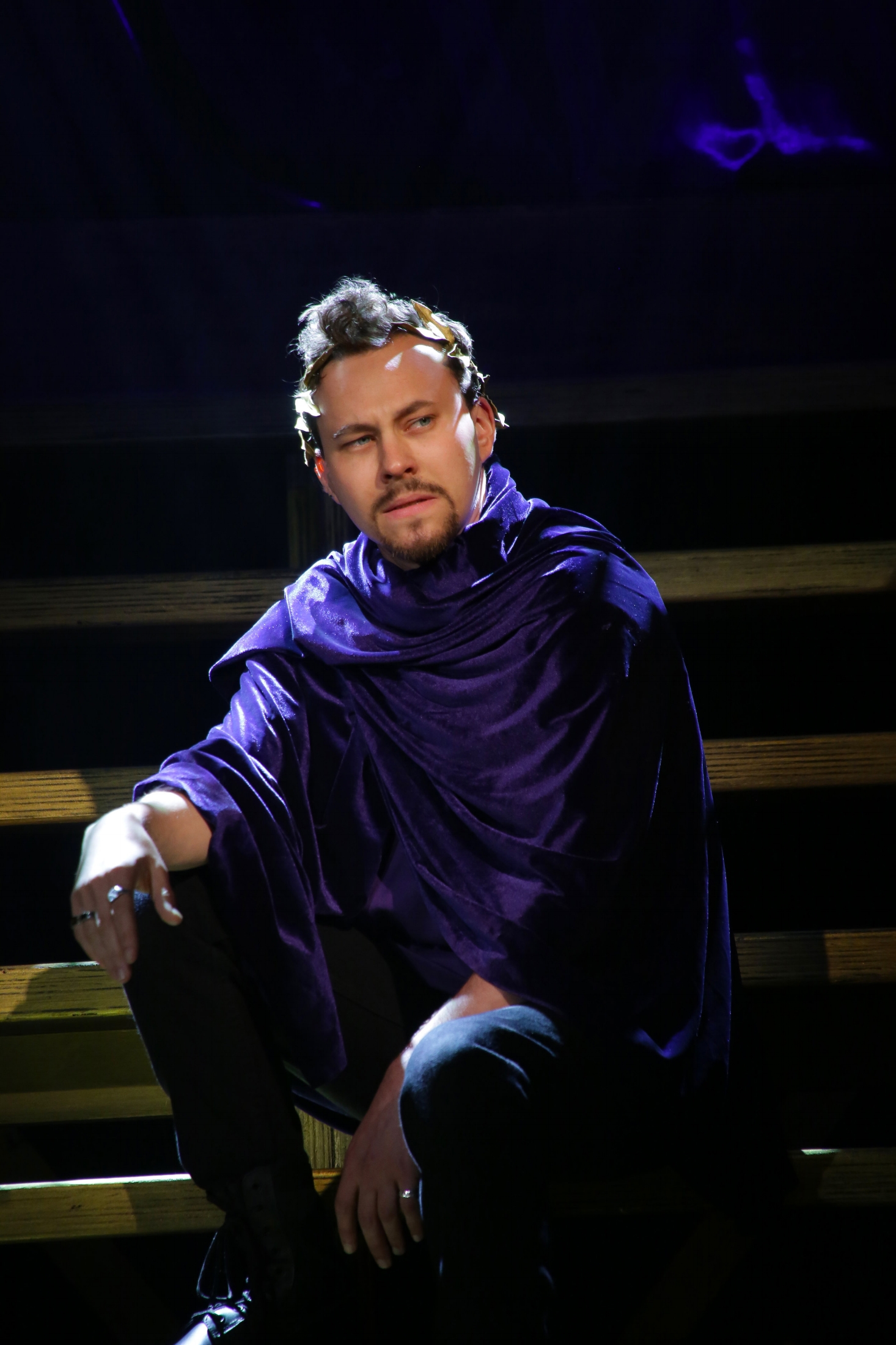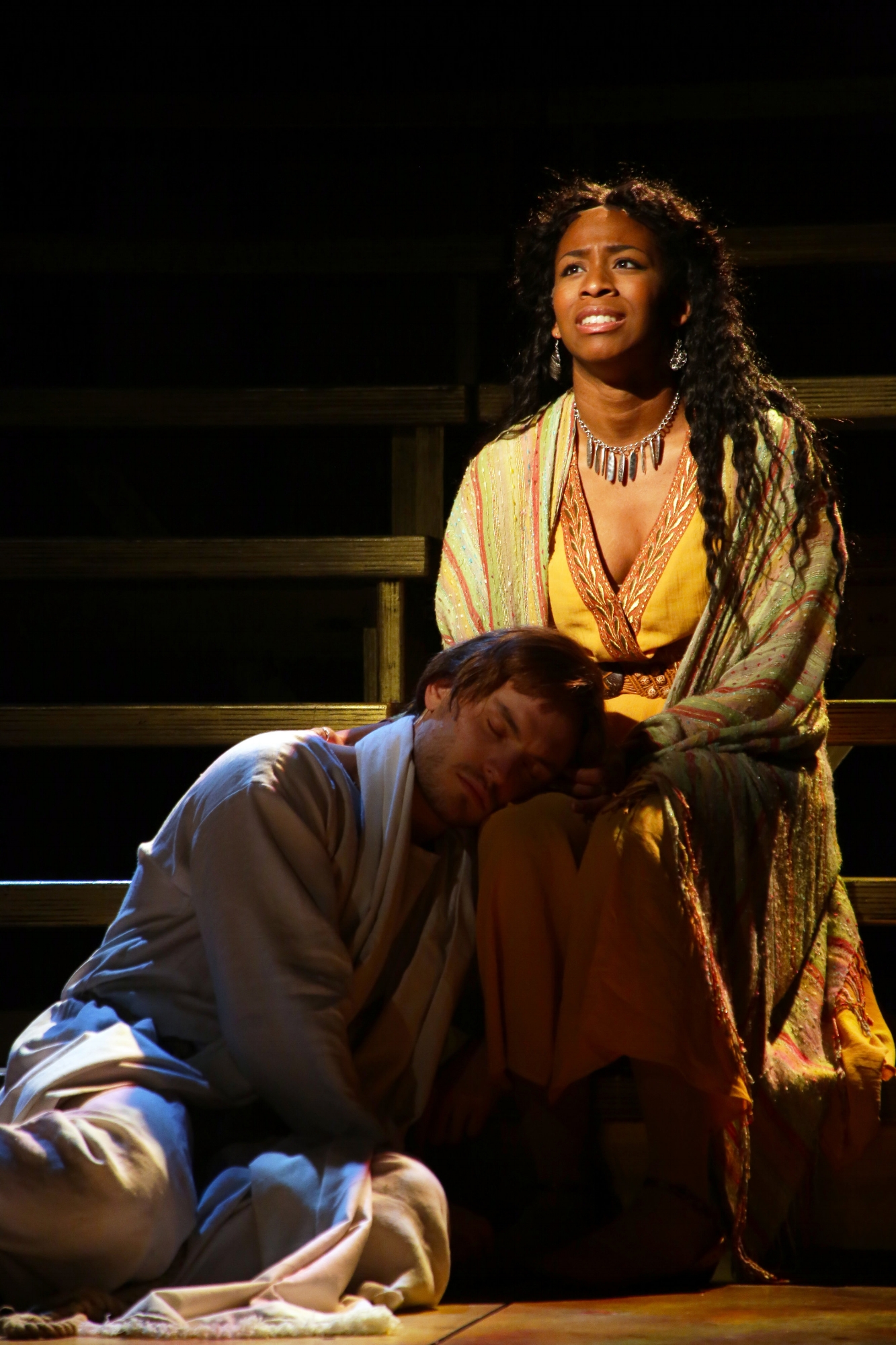Review of The Drowsy Chaperone, Goodspeed Musicals
When Ben Brantley reviewed the original Broadway production of The Drowsy Chaperone in 2006 he noted what a crowd-pleaser it was, but seemed bemused by that fact. You could say there’s a certain critical prejudice against shows that are simply good fun and have, as the saying goes, “no redeeming social value.” It’s fitting that the show should be mostly fluff, since the idea for this musical spoofing musicals began as a party joke that Don McKellar, Lisa Lambert, and Greg Morrison devised for the amusement of Robert Martin and his betrothed, Janet Van de Graaff. And so the main plot element here is how to keep the affianced lovers—Bob (Clyde Alves) and Janet (Stephanie Rothenberg)—from seeing each other before the marriage, while, of course, lots of ambient romance circulates and we wait to see who couples or uncouples with whom. An added attraction is that Janet is a Broadway star of some magnitude who has vowed to forsake the footlights for the sake of her man.
“Show Off,” with Janet Van de Graff (Stephanie Rothenberg), center, and the cast of The Goodspeed production of The Drowsy Chaperone (photos credit: Diane Sobolewski)
Lambert and Morrison wrote the music and lyrics and the songs are mostly excuses for silliness set to music, having the kind of effervescence associated with champagne in large quantities. And that’s fitting as the titular character—The Chaperone (Jennifer Allen)—imbibes immodestly and tends to get drowsy (or so she says) when she drinks. Her faux dozing leaves her charge, Janet, free for a prenuptial espial of her betrothed, Robert, he of the gleaming teeth, as he roller-skates blindfolded in the garden. Their encounter there sparks a contretemps that may capsize their particular love boat.
“Adolpho,” with Adolpho (John Rapson) and The Chaperone (Jennifer Allen)
Meanwhile, the Chaperone finds herself mistaken as the bride for the erotic attentions of Adolpho (John Rapson), an operatic Italian who wants to seduce Robert’s betrothed as payback for a perceived slight. Meanwhile, there are gangsters on hand—two brothers played to the hilt by the brothers Slaybaugh (Blakely and Parker)—because, if Janet jilts the production she’s starring in, it ain’t going to be pretty for Feldzieg (James Judy), a theater producer accompanied everywhere by Kitty (Ruth Pferdehirt), an inspired ditz as strident would-be star. There’s also the lady of the house, Mrs. Tottendale (Ruth Gottschall) and her fastidious butler, Underling (Jay Aubrey Jones), George, the forgetful best man (Tim Falter), and, for good measure in the finale, a genial aviatrix, Trix (Danielle Lee Greaves).
“Cold Feets,” with George (Tim Falter) and Robert Martin (Clyde Alves)
The book by Bob Martin and Don McKellar bristles with quick scenes, the kind of exchanges that set-up improbable songs—like Robert singing about “Cold Feets” and then proceeding to tap-dance enthusiastically with George, who channels his best Gene Kelly, or like the gangsters, Feldzieg, and Kitty enlightening us about the “Toledo Surprise,” a bit of vaudevillian vim that leads into the Act One closer. And while I’m on the songs, the show-stopper and untoppable topper is Janet’s big number “Show Off”—she changes costume at least three times on stage, hits high notes, twirls hoops, flings knives, and does everything she can think of to hold attention while insisting, quite fetchingly, that she’s done with it all. My other favorite was The Chaperone’s paean to the blitzed life, “As We Stumble Along,” dished up as what it is: the big number for an aging grande dame of the theater to showboat on.
Man in Chair (John Scherer)
Pointing out how each song and plot-point and character-turn hangs together with featherbrained logic is the task of the real hero of this fizzy farce, Man in Chair (an affably flappable John Scherer). He’s a retiring nebbish ensconced in his favorite chair in his no doubt rent-controlled apartment, spinning his beloved platter of the original cast recording of The Drowsy Chaperone. He’s a lover of musicals, so long as the show’s not too long—preferably with no intermission and without the musical theater stylings of Sir Elton. The rest of the scenes occur by benefit of his memory and imagination as the show unfolds before us while the double LP plays. And whether you love musicals or approach them with trepidation, you’ll find him a simpatico host. I wanted to cheer when he chucked a ringing phone out the door. He’s even a bit more scathing than a critic might be: while the spit-take scene between Mrs. Tottendale and Underling is indeed pointless, it is also surprisingly hilarious.
Underling (Jay Aubrey Jones), Man in Chair (John Scherer), Mrs. Tottendale (Ruth Gottschall)
In fact, most of the fun here is in seeing how much brio the cast—all top notch—and director Hunter Foster, with choreography by Chris Bailey, can bring to this balderdash. And don’t forget the costumes! Tony Award winner (for this show on Broadway, as well as Follies) Gregg Barnes does Man in Chair’s imagination proud, including the chinoiserie of a strange interlude that opens Act Two, and extending to countless costume changes—and not just for the starlet. The Slaybaugh brothers—who have perfected the slow burn—appear in different complementary get-ups each time they show up. The razzle dazzle throughout is in your face and eye-opening, including scenery that comes and goes as required thanks to the design by Goodspeed veteran Howard Jones, culminating with a biplane, by George!
“I Do, I Do in the Sky,” with the cast of The Drowsy Chaperone
In the end, what if anything does this zany show say? Maybe something about the version we carry with us of a past we never saw in person. Filling out a recording with mental enactments is nearly a lost art, so that our nostalgia for Man in Chair’s nostalgia leads us to newfound delight in living actors able to embody, boldly and broadly, that old Broadway we missed.
Gangster #1 (Blakely Slaybaugh), Kitty (Ruth Pferdehirt), Gangster #2 (Parker Slaybaugh)
It’s a hoot, and the most fun you’ll ever have chaperoned.
The Drowsy Chaperone
Music & Lyrics by Lisa Lambert and Greg Morrison
Book by Bob Martin and Don McKellar
Directed by Hunter Foster
Music Direction by Michael O’Flaherty
Choreography by Chris Bailey
Scenic Design: Howard Jones; Costume Design: Gregg Barnes; Lighting Design: Kirk Bookman; Sound Design: Jay Hilton; Wig & Hair Design: Mark Adam Rampmeyer; Assistant Music Director: William J. Thomas; Orchestrations: Dan DeLange; Production Manager: Erica Gilroy; Production Stage Manager: Bradley G. Spachman; Producer: Donna Lynn Cooper Hilton
Cast: Jennifer Allen, Clyde Alves, Hallie Brevetti, Abby Church, James Spencer Dean, Tim Falter, Ruth Gottschall, Danielle Lee Greaves, Bryan Thomas Hunt, Jay Aubrey Jones, James Judy, Evan Mayer, Ruth Pferdehirt, John Rapson, Stephanie Rothenberg, John Scherer, Blakely Slaybaugh, Parker Slaybaugh, Gabi Stapula
Goodspeed Musicals
From September 21, 2018

























